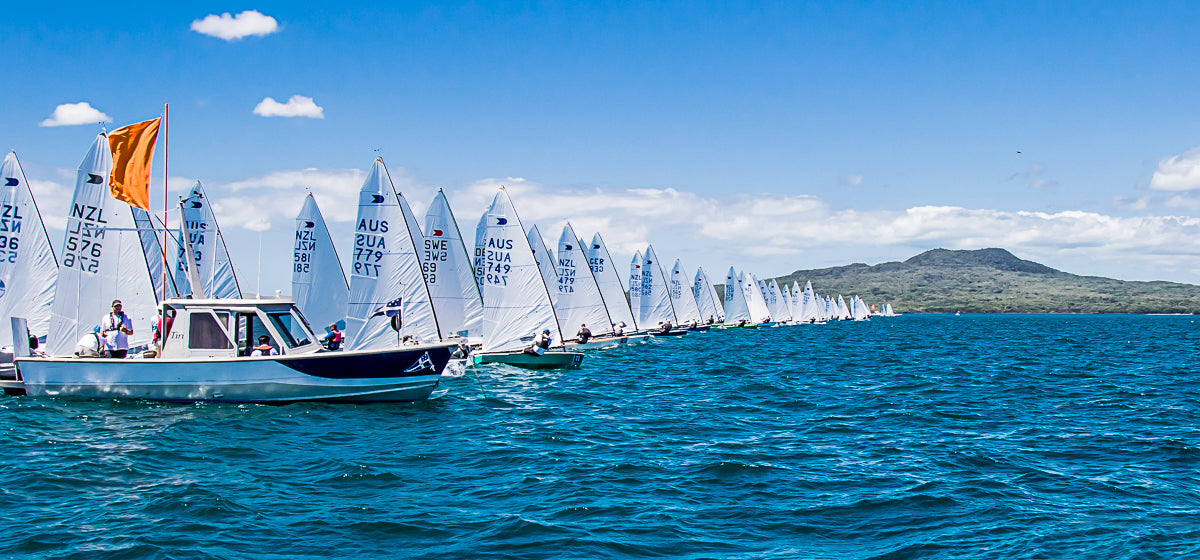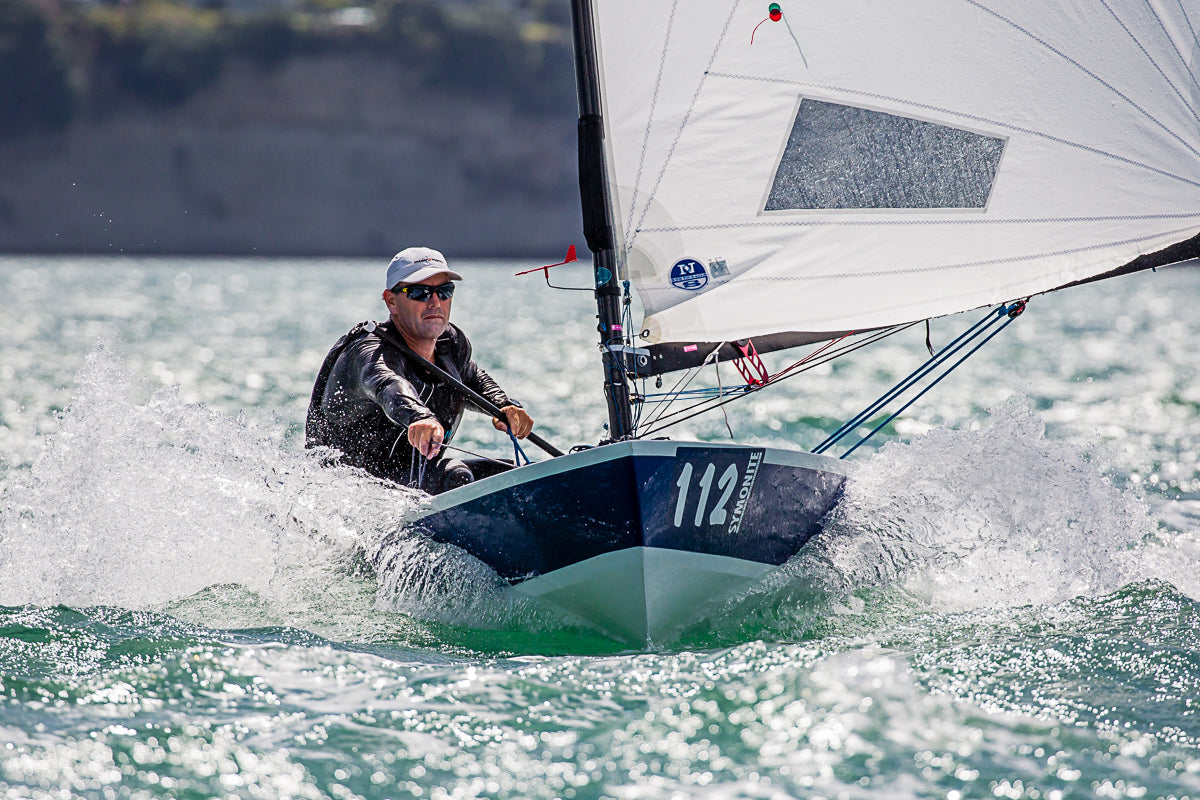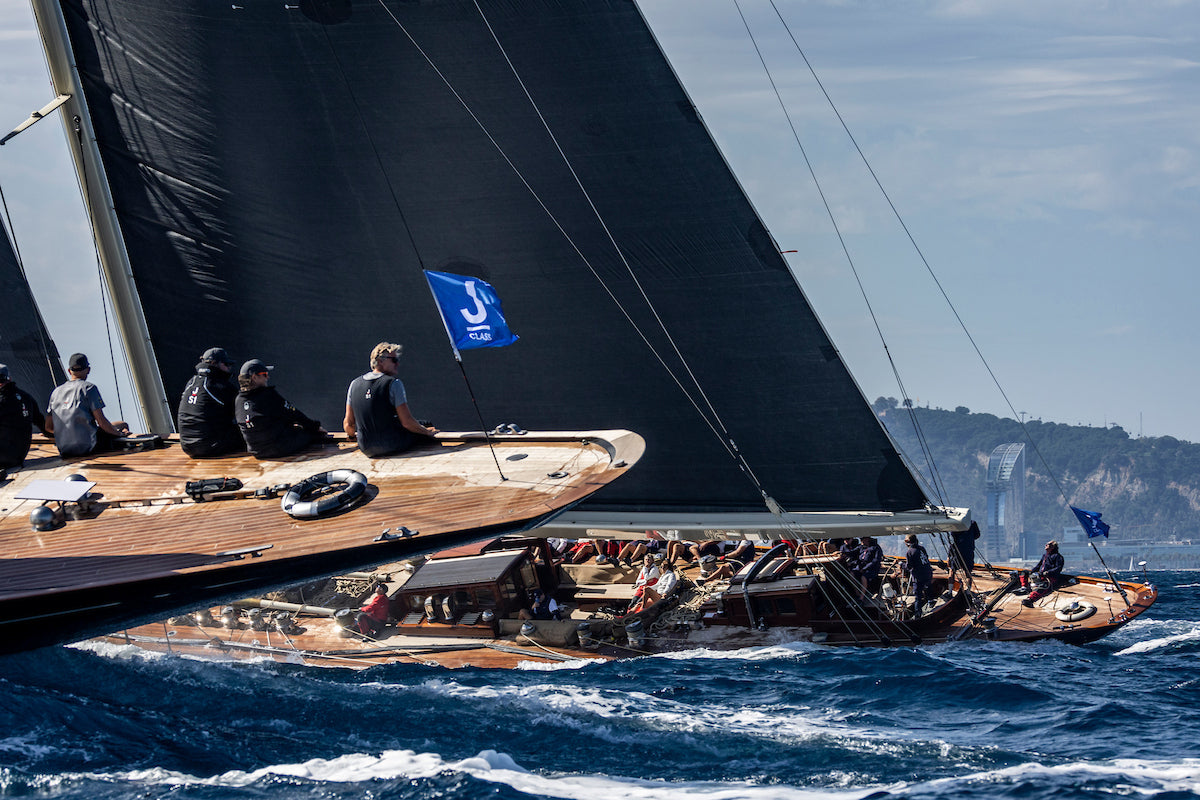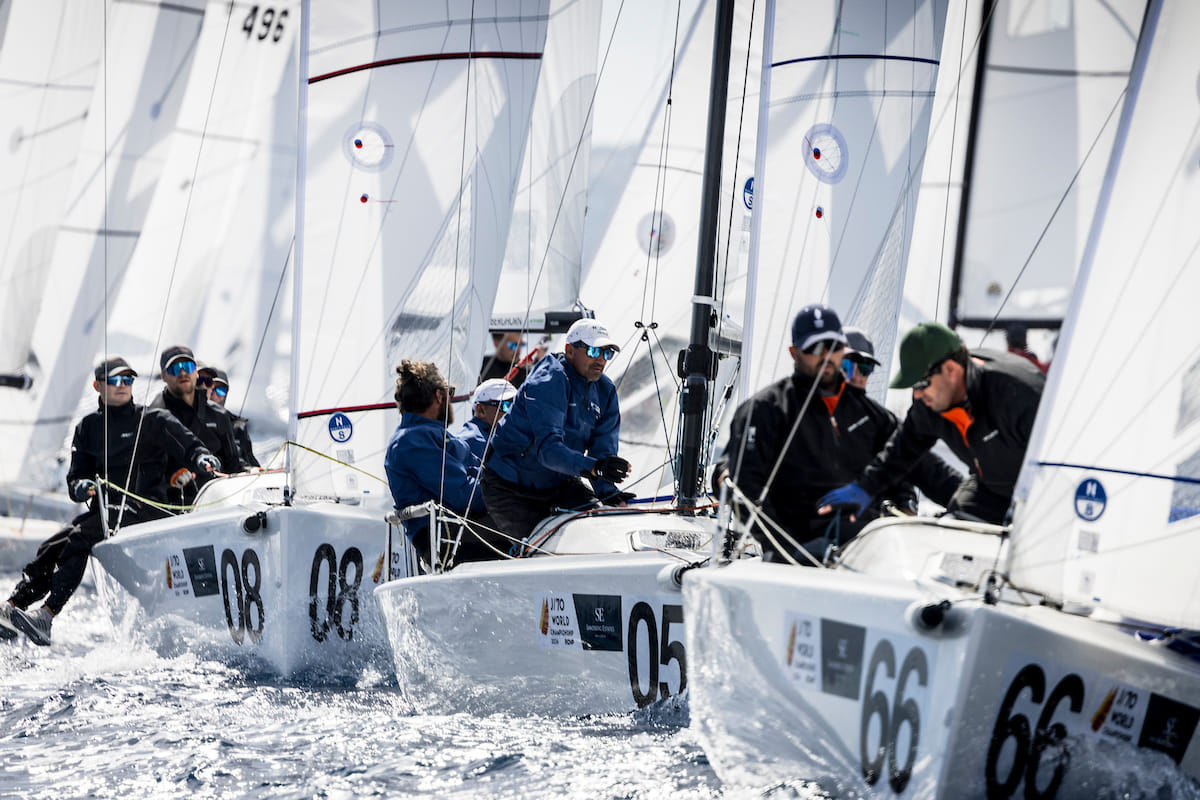OK DINGHY WORLDS: PERSPECTIVES FROM THE NEW WORLD CHAMPION
OK DINGHY WORLDS: PERSPECTIVES FROM THE NEW WORLD CHAMPION
Dan Slater Explains How He Won The 2019 Title

Dan Slater was an Olympian in the 49er and Finn classes for New Zealand when in 2015 he began sailing the OK Dinghy, which he describes as a “smaller, hard-chine version of a Finn Dinghy.” Age 43, Dan had long been working as a sailing coach while also running a watersports and dinghy specialist shop called The Water Shed and says that after his Olympic class sailing days, he’d begun to miss sailing in a competitive fleet. He built his own OK and found in racing it a good chance to stay sharp for professional sailing work.
When the OK Worlds came to Auckland in 2019, Dan admits he might have had a home field advantage. He had been sailing for 25 years in those same waters off Takapuna, where the America’s Cup racing was held in 2000 and 2003. But Dan was not the only sailor with a local edge. Some 25 to 30 boats race in his local fleet on Sunday afternoons and contributed dozens of competitive entries to an overall fleet of 110 Worlds competitors. They finished well, too, with only three non-Kiwis finishing in the top 10.
Conditions for the regatta were relatively normal for the summer season. “We were lucky,” Dan says. “We had wind from every direction of the compass. A couple of light races, a couple quite breezy, and otherwise generally 12 to 15 knots.”
The starting lines were 600 meters long, and it was often shifty. “I had to be in the middle of the line and make the call on where to start at two and a half minutes to go,” Dan says, “then get towards the end I wanted and find my position. At one start near the pin, I tacked after 20 seconds and crossed the fleet. In small boats, you have a lot of leverage on a line that long. And the beats are only a mile long.”

Bold decision-making was required to succeed in a regatta such as this, but Dan’s speed was also excellent, and he sailed with extraordinary consistency for the first seven of nine races, winning one race and always finishing in the top four.
Getting in good physical condition made a big difference, Dan says, and in preparation for the regatta he lost five kilos and built up his conditioning.
Dan had been working with North Sails all four years since joining the class. The OK allows only Dacron or other woven cloth, but offers design flexibility, and sailors can choose two sails to measure in. Dan says his deal with North was to help develop an all-purpose design that everyone could use (with modifications to luff curve to match each sailor’s mast-bend numbers), and he got several local sailors involved including former Olympic medalist Rod Davis.
While Dan designed a variety of shapes, he ended up measuring in a light-air sail plus the all-purpose sail, the KP-1. “I used the KP-1 in 8 of the 9 races,” Dan says. “We had the perfect 12 to 15 knots, exactly what it was designed for.” The sail has a bigger range than other designs, he says, with a “twisty head,” but you have to be prepared to trim more, which is a change for many OK sailors.
Rod Davis used the same sail, finishing ninth overall and first in the Masters Division, and several other Kiwi sailors did well with the sail.

On the last day of sailing, Dan had a pair of finishes in the 20s. “I made a meal of the first race,” he says. “There was a southerly fighting a westerly in the first race, with puffs from both sides, and at the start there was a massive right-hand shift. Some guys almost laid the mark from the start. I was down toward the pin and rounded the weather mark with only five boats behind me. The saving grace was that the other top guys were only about 10 boats ahead of me for the whole race, so nobody put heaps of points on anybody else.” Dan crossed the line in 24th, his discard race.
“In the second race,” Dan says, “I had a blinder start and was in control of the fleet. I knew Freddy
One of Dan’s takeaways from the championship was for local fleets, like his New Zealand group: “We need to look at the length of our beats in club racing,” he says. “We tend to do short laps and don’t really learn whether we are fast or slow.” He recommends some longer legs to prepare for major events.
For OK Dinghy sailors generally, Dan says, “Keep enjoying it! If you enjoy it, you tend to do more of it.” One way to do that is to make sure your boat is as comfortable as possible to sail, he says, which he planned to do for next season by widening his side decks to make hiking less painful.
Results: http://2019.okworlds.org/wp-content/uploads/2019/02/Results-Race-9.html





























